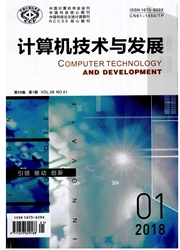

 中文摘要:
中文摘要:
System-of-systems(So S) engineering involves a complex process of refining high-level So S requirements into more detailed systems requirements and assessing the extent to which the performances of to-be systems may possibly satisfy So S capability objectives. The key issue is how to model such requirements to automate the process of analysis and assessment. This paper suggests a meta-model that defines both functional and nonfunctional features of So S requirements for command and control,communication, computer, intelligence, surveillance reconnaissance(C4ISR) systems. A domain-specific modeling language is defined by extending unified modeling language(UML) constructed of class and association with fuzzy theory in order to model the fuzzy concepts of performance requirements. An efficiency evaluation function is introduced, based on B ′ezier curves,to predict the effectiveness of systems. An algorithm is presented to transform domain models in fuzzy UML into a requirements ontology in description logic(DL) so that requirements verification can be automated with a popular DL reasoner such as Pellet.
 英文摘要:
英文摘要:
System-of-systems (SOS) engineering involves a com- plex process of refining high-level SoS requirements into more detailed systems requirements and assessing the extent to which the performances of to-be systems may possibly satisfy SoS capa- bility objectives. The key issue is how to model such requirements to automate the process of analysis and assessment. This paper suggests a meta-model that defines both functional and non- functional features of SoS requirements for command and control, communication, computer, intelligence, surveillance reconnais- sance (C41SR) systems. A domain-specific modeling language is defined by extending unified modeling language (UML) con- structed of class and association with fuzzy theory in order to model the fuzzy concepts of performance requirements. An effi- ciency evaluation function is introduced, based on Bezier curves, to predict the effectiveness of systems. An algorithm is presented to transform domain models in fuzzy UML into a requirements ontology in description logic (DL) so that requirements verification can be automated with a popular DL reasoner such as Pellet.
 同期刊论文项目
同期刊论文项目
 同项目期刊论文
同项目期刊论文
 期刊信息
期刊信息
